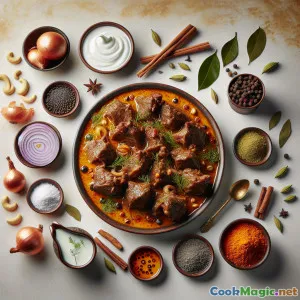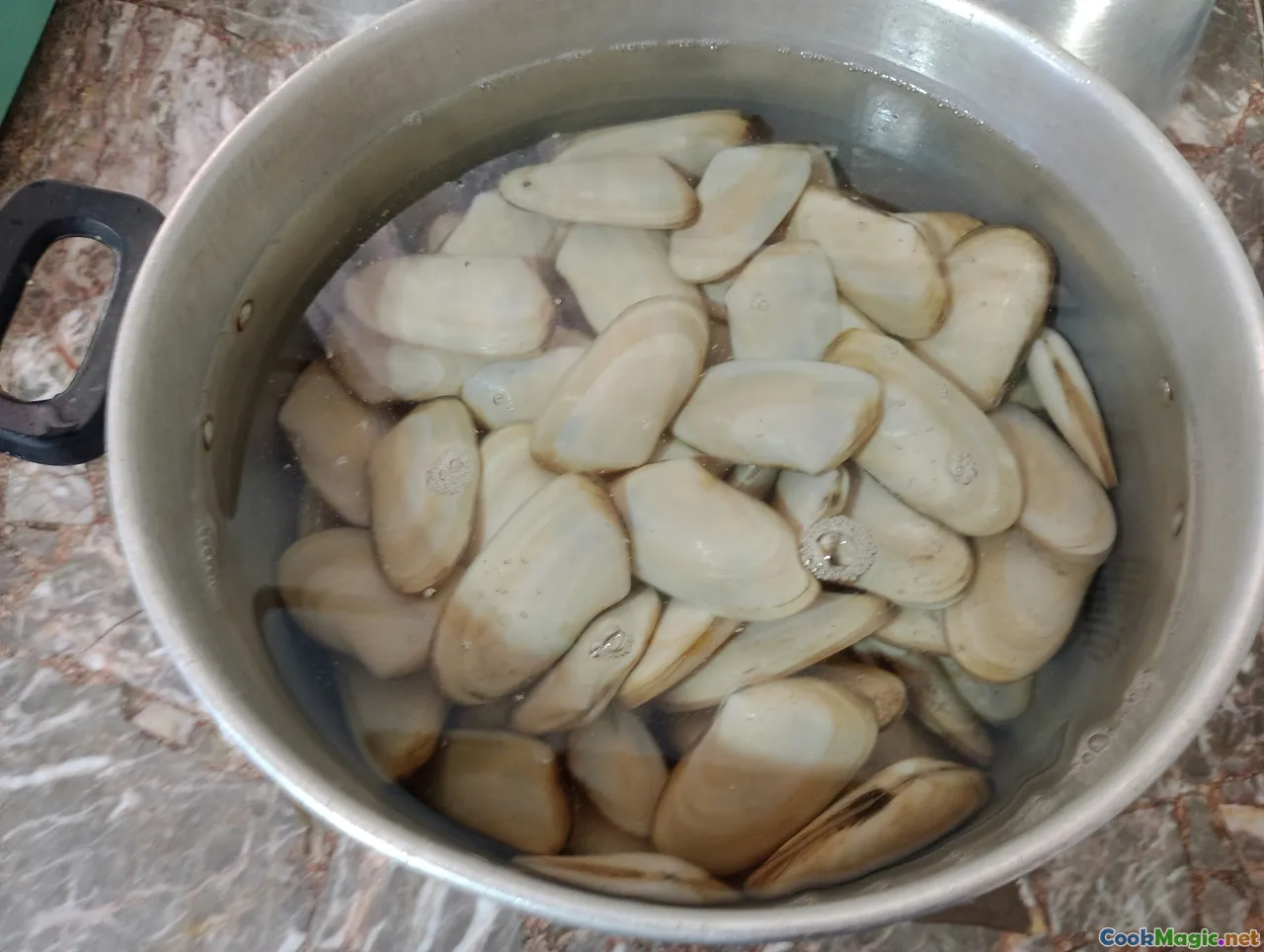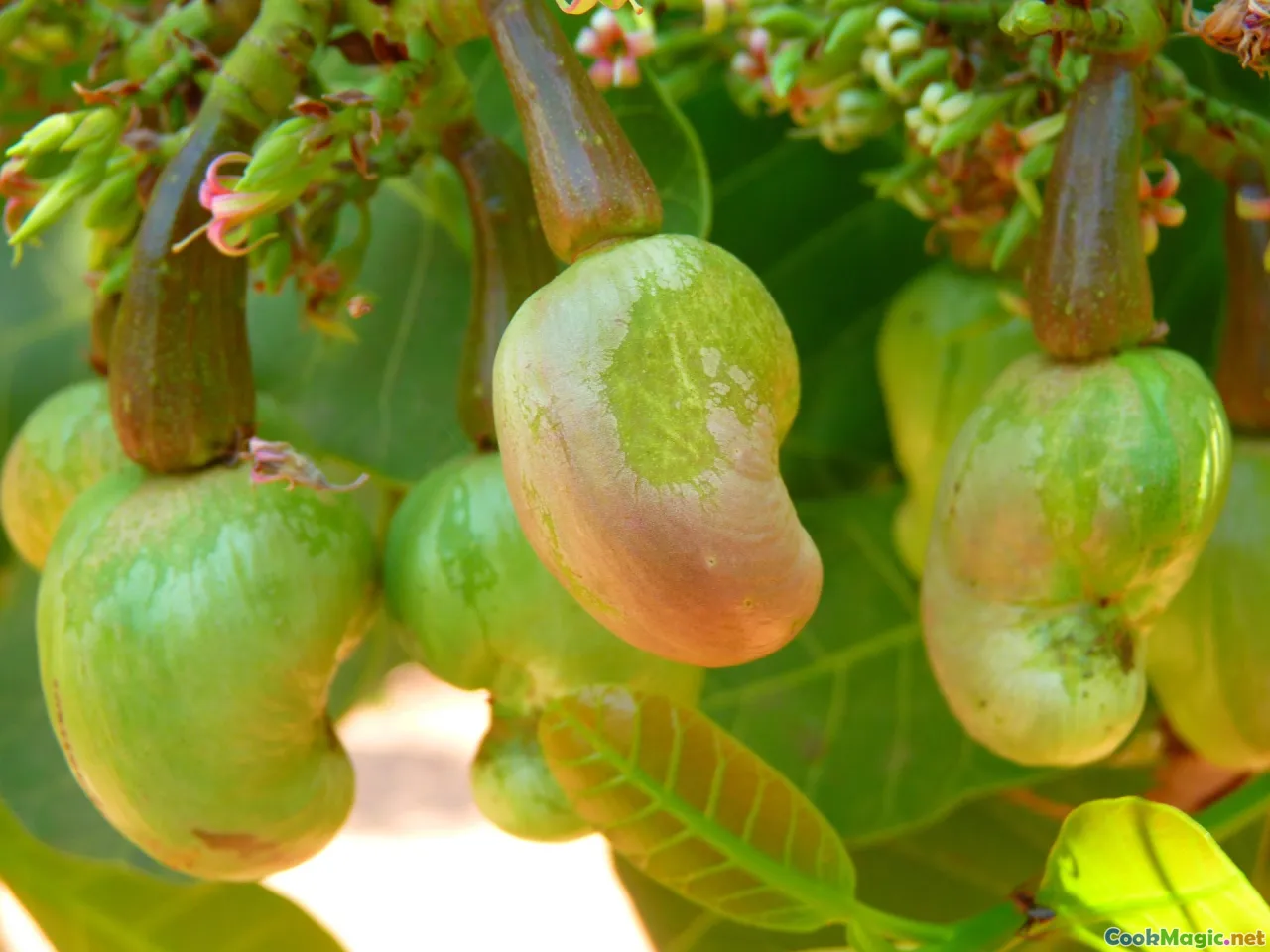
Kraliyet Rajasthani Beyaz Koyun Eti Köri Tanıtıldı
(Royal Rajasthani White Mutton Curry Unveiled)
(0 Yorumlar)0
1,018
Temmuz 17, 2025
Bir Sorun Bildir
Malzemeler
-
600 grams Koyun (kemikli)
(Orta boy parçalar isteyin; mümkünse organik ürünler kullanın.)
-
2 medium Soğan ezmesi
(Beyaz soğanlar tercihen, ince püre halinde.)
-
60 grams Kaju fıstığı
(Islatın ve pürüzsüz bir macun elde edene kadar öğütün.)
-
20 grams Haşhaş Tohumu
(Islatılmış ve öğütülmüş, kraliyet soslarında cömertçe kullanılan.)
-
120 grams Taze yoğurt
(Tam yağlı krema, iyi çırpılmış.)
-
3 tbsp Ghee (açık tereyağı)
(Otantik tat; 1 yemek kaşığı yerine yağ kullanabilirsiniz.)
-
4 pieces Yeşil kakule tohumları
-
3 pieces karanfil
-
1 inch piece Tarçın çubuğu
-
6 pieces Karabiber tanecikleri
-
1 piece Defne yaprağı
-
2 tbsp Zencefil-sarımsak ezmesi
(Taze, tercihen ev yapımı.)
-
100 ml Süt
(Kremamsı bir doku katar.)
-
1 tsp Beyaz biber tozu
(Renk almadan ısıtın.)
-
1 pinch Muskat
(Taze rendelenmiş, isteğe bağlı ama tavsiye edilir.)
-
1 tsp Kewra suyu
(Kokulu, çiçeksi bir not için; gül suyu yerine geçebilir.)
Tuz, to taste
-
2 tbsp Taze krema
(Son dokunuş için.)
-
2 sheets Gümüş yaprak (varq)
(Kraliyet süslemesi için. Bulunmuyorsa çıkarın.)
-
1 tbsp Taze kişniş yaprakları
(İnce doğranmış, süsleme için.)
(Orta boy parçalar isteyin; mümkünse organik ürünler kullanın.)
(Beyaz soğanlar tercihen, ince püre halinde.)
(Islatın ve pürüzsüz bir macun elde edene kadar öğütün.)
(Islatılmış ve öğütülmüş, kraliyet soslarında cömertçe kullanılan.)
(Tam yağlı krema, iyi çırpılmış.)
(Otantik tat; 1 yemek kaşığı yerine yağ kullanabilirsiniz.)
(Taze, tercihen ev yapımı.)
(Kremamsı bir doku katar.)
(Renk almadan ısıtın.)
(Taze rendelenmiş, isteğe bağlı ama tavsiye edilir.)
(Kokulu, çiçeksi bir not için; gül suyu yerine geçebilir.)
(Son dokunuş için.)
(Kraliyet süslemesi için. Bulunmuyorsa çıkarın.)
(İnce doğranmış, süsleme için.)
Besin Değerleri
- Porsiyon: 4
- Porsiyon Boyutu: 1 kâse (250g)
- Calories: 550 kcal
- Carbohydrates: 21 g
- Protein: 32 g
- Fat: 37 g
- Fiber: 2.5 g
- Sugar: 6 g
- Sodium: 740 mg
- Cholesterol: 110 mg
- Calcium: 140 mg
- Iron: 3.2 mg
Talimatlar
-
1 - Koyun etini temizleyin ve hazırlayın:
Koyun etinin parçalarını yıkayın ve iyice kurulayın. Bir kenara koyun. Haşhaş tohumlarını ve kaju fıstıklarını ılık suda ıslatmaya başlayın; bir macun elde etmek için.
-
2 - Macunları karıştırın:
Islatılmış kajuları ve haşhaş tohumlarını, gerektiğinde biraz su kullanarak pürüzsüz bir macun haline gelene kadar öğütün. Ayrı olarak, beyaz soğanları püre halinde ezin.
-
3 - Bütün baharatları sotelemek:
Ağır bir tavada ghee'yi ısıt. Kakule (cardamom), karanfil, tarçın, karabiber ve defne yaprağını ekle. Kokusu çıkana kadar cızırdayıp aromasını salana kadar kavur.
-
4 - Soğan ve yoğurt karışımı:
Soğan ezmesi ekleyin, aromasını yumuşayıncaya kadar ve karışım saydamlaşana kadar nazikçe pişirin. Zencefil-sarımsak ezmesi ekleyin ve hafif altın rengi olana kadar sote edin. Yoğurdu karıştırın, yağı ayrılana kadar kısık ateşte pişirin.
-
5 - Koyun etini kahverdirin ve mühürleyin:
Tavaya koyun eti parçalarını ekleyin, yüksek ateşte birkaç dakika boyunca her tarafı eşit şekilde kahverenkâr olana kadar kızartın.
-
6 - Kuruyemiş ezmeleri ve baharatları ekleyin:
Kaju fıstığı ve haşhaş tohumu ezmesini ekleyin, tuz, beyaz biber ve bir tutam muskat cevizi ilave edin. Hepsi 5–6 dakika düşük ateşte karıştırın.
-
7 - Mükemmeliyete kadar kısık ateşte pişirin.:
Sütü ve yaklaşık 1,5 su bardağı suyu dökün. Üstünü kapatıp kısık ateşte 50–60 dakika pişirin; koyun eti tamamen yumuşayıncaya ve sos koyulaşıncaya kadar.
-
8 - Son Dokunuşlar:
Isıyı kapat. Taze kremayı ekleyin ve koku için nazikçe kewra suyu karıştırın. Tuzunu tadına bakarak ayarlayın.
-
9 - Süsleme ve Servis:
Bir kaşıkla servise alınan bir tabağa aktarın, parıldayan gümüş yapraklarını dizin ve doğranmış kişnişi serpin. Sıcak olarak servis edin; yanında Sheermal veya aromatik pirinç ile.
Koyun etinin parçalarını yıkayın ve iyice kurulayın. Bir kenara koyun. Haşhaş tohumlarını ve kaju fıstıklarını ılık suda ıslatmaya başlayın; bir macun elde etmek için.
Islatılmış kajuları ve haşhaş tohumlarını, gerektiğinde biraz su kullanarak pürüzsüz bir macun haline gelene kadar öğütün. Ayrı olarak, beyaz soğanları püre halinde ezin.
Ağır bir tavada ghee'yi ısıt. Kakule (cardamom), karanfil, tarçın, karabiber ve defne yaprağını ekle. Kokusu çıkana kadar cızırdayıp aromasını salana kadar kavur.
Soğan ezmesi ekleyin, aromasını yumuşayıncaya kadar ve karışım saydamlaşana kadar nazikçe pişirin. Zencefil-sarımsak ezmesi ekleyin ve hafif altın rengi olana kadar sote edin. Yoğurdu karıştırın, yağı ayrılana kadar kısık ateşte pişirin.
Tavaya koyun eti parçalarını ekleyin, yüksek ateşte birkaç dakika boyunca her tarafı eşit şekilde kahverenkâr olana kadar kızartın.
Kaju fıstığı ve haşhaş tohumu ezmesini ekleyin, tuz, beyaz biber ve bir tutam muskat cevizi ilave edin. Hepsi 5–6 dakika düşük ateşte karıştırın.
Sütü ve yaklaşık 1,5 su bardağı suyu dökün. Üstünü kapatıp kısık ateşte 50–60 dakika pişirin; koyun eti tamamen yumuşayıncaya ve sos koyulaşıncaya kadar.
Isıyı kapat. Taze kremayı ekleyin ve koku için nazikçe kewra suyu karıştırın. Tuzunu tadına bakarak ayarlayın.
Bir kaşıkla servise alınan bir tabağa aktarın, parıldayan gümüş yapraklarını dizin ve doğranmış kişnişi serpin. Sıcak olarak servis edin; yanında Sheermal veya aromatik pirinç ile.
Kraliyet Rajasthani Beyaz Koyun Eti Köri Tanıtıldı :Hakkında Daha Fazlası
Safed Maas Sheherwali Style: A Regal Heritage on Every Plate
Introduction & History
Safed Maas Sheherwali Style is not simply a dish; it epitomizes the confluence of Rajasthani royalty and unique Sheherwali Jain cultural influences that thrived in Murshidabad—once Bengal's seat of power and multicultural splendor. Traditionally, 'Safed Maas' in Rajasthan signifies a mutton curry solely bathed in white gravies, eschewing red chilies and vibrant spice blends for slivers of subtlety and aromatics. The Sheherwali community, celebrated for their mercantile nous and discerning finesse, reflected their regal opulence in banquets interwoven with Mughal and Marwari essence.
What Sets Sheherwali Safed Maas Apart?
This rendition’s reverent homage to timeless princely kitchens lies in its orchestral balance: a medley of nuts—cashew and poppy seed paste—enrich the velvety gravy, harmonizing with mellow yogurt, floral spices, and an occasional kiss of rose. Unlike the fiery red gravies, this one seeks a gentle elegance, letting the tender mutton and creamy sauce sing. What truly distinguishes the Sheherwali style is:
- Refusal to use regular red chili, turmeric, or harsh garam masala.
- Joyous embrace of mild white pepper, aromatics, nuts, and flower essences.
- Frequent use of a touch of floral (often kewra or rose) water for fragrant finish.
- Optional application of shimmering silver leaf (‘varq’) for special feasts.
Cooking Secrets, Tips, & Personal Notes
Meat Selection: How the mutton is cut matters. Choose pieces with bone—the slow, hour-long simmer is what yields a gravy bursting with flavor and the supremely tender characteristic of no-nonsense regal curries.
Cashew-Poppy Paste: Ensure both nuts and seeds are soaked for at least half an hour to ensure smoothest grinding. A fine, velvety paste prevents grittiness in that prized white gravy.
The Aromatic Difference: Frying whole spices in ghee initiates the dish’s symphony. Control the flame and sauté aromatics gently to repel bitterness from onions and garlic.
Milk & Yogurt Marriage: To master a shamelessly lush yet subtle sauce, you must balance milk and yogurt, whisking slowly into the base to avoid curdling.
Garnishing with Class: For formal occasions, delicate sheets of edible silver leaf leave a striking impression and hint at the aristocratic table.
Accompaniments: Sheherwali Safed Maas is customarily enjoyed with sheermal (sweet saffron flatbread), soft naans, or plain fragrant basmati. When seeking contrast, jeera rice punctuates the meal’s richness.
If you crave a vegetarian tweak, simply substitute paneer chunks or boiled potatoes and use the core technique.
Cultural Significance
Though Sheherwali cuisine for the most part follows Jain vegetarian laws, at grand social functions or interactions with the Rajasthani nobility, such royal celebratory non-veg dishes were nuanced for a gentle, extravagant palate. Carefully balanced spices and an absence of overbearance honor ancient codes of hospitality, appeasing both privilege and probity. They stand as a testament to the meld of Jain thought, royal opulence, and Mughal artistry.
Final Musings & Aspects
If you seek to wow guests with an unforgettable feast in a velvet white, this dish will become a party centerpiece. It’s a paean to delicate flavors over unrestrained heat. Its silken texture—lavished with nuts and milk—soothes, yet leaves a savory trailing note, gently coaxed upward by keora’s floral finish.
For best results:
- commit to slow-cooking;
- be gentle when adding milk or yogurt;
- don’t skip the little musk of nutmeg or the sweet floral note at the end.
Whether for a winter gathering or a festive thali, Safed Maas Sheherwali Style will transport your table across time, drawing every guest into a world where flavor, refinement, and festivity reign.























